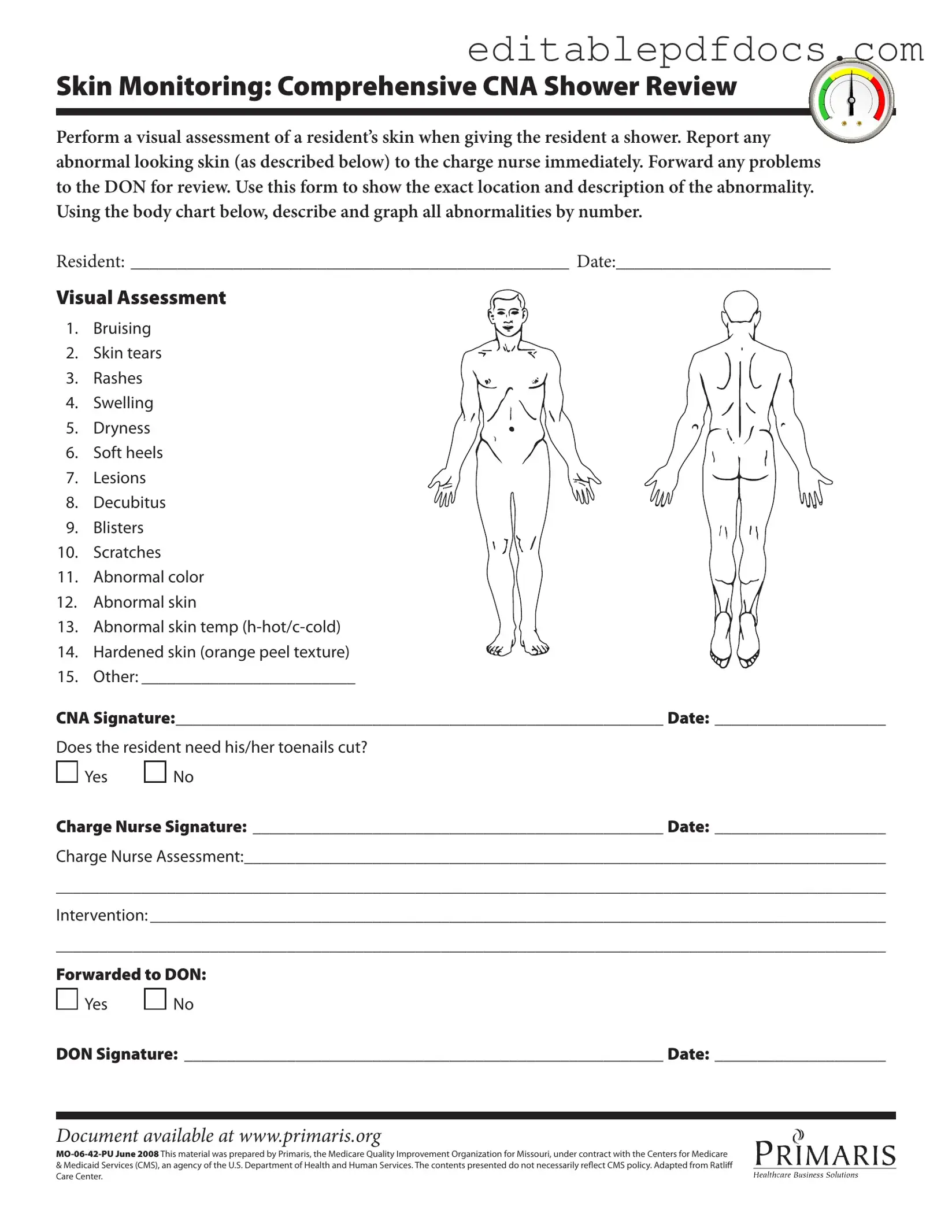Filling out the CNA Shower Sheets form accurately is crucial for the well-being of residents. However, several common mistakes can lead to incomplete or inaccurate information. One major error is failing to conduct a thorough visual assessment of the resident's skin. Skipping this step can result in overlooking serious conditions that require immediate attention.
Another frequent mistake is not documenting the specific location of any abnormalities. When abnormalities are noted, it is essential to pinpoint where they occur on the body chart provided. Vague descriptions can lead to confusion and hinder proper follow-up care.
Many individuals also forget to report findings to the charge nurse promptly. Delays in communication can exacerbate health issues. It is vital to notify the charge nurse immediately after identifying any skin concerns, ensuring that the resident receives timely intervention.
Inaccurate descriptions of skin conditions pose another challenge. For instance, using terms like "red" or "sore" without further detail does not provide sufficient information. Instead, clear and specific descriptions help medical professionals understand the severity and type of issue.
Some CNAs neglect to indicate whether the resident needs toenail care. This oversight can lead to further complications, especially for residents with mobility issues or diabetes. It is important to assess and document this need as part of the overall care plan.
Failing to obtain the charge nurse's signature is another common mistake. This signature serves as confirmation that the findings have been reviewed and acknowledged. Without it, the documentation may not hold the necessary weight in the care process.
Additionally, some CNAs do not forward the completed form to the Director of Nursing (DON) when required. This step is crucial for ensuring that any serious skin issues are escalated and addressed appropriately. Neglecting this can hinder the overall quality of care provided to residents.
Lastly, not keeping a copy of the completed form for personal records can lead to issues down the line. Having a reference can be invaluable for continuity of care and for any follow-up discussions with nursing staff. Maintaining thorough documentation is essential for effective communication and quality care.
